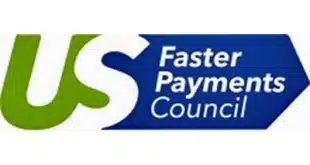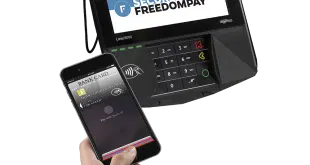New national systems, the card networks, and blockchain operations are all piling into real-time payments. What’s going on, and why?
If the travails of 2020 had any advantages, they lay in how the struggle with the pandemic offered opportunities to demonstrate the vital utility of technologies like contactless payments and e-commerce.
But perhaps the technology that shone brightest was real-time networking, which could be harnessed to get much-needed funding into the right hands in a matter of minutes, if not seconds.
Real-time payments may not be quite as quick as handing a $20 bill to the person standing next to you, but it’s plenty fast—lightning fast compared to the processing times of just a few years ago. And it could prove equally quick in establishing itself as the new normal for consumer and commercial payments.
In the pages that follow, we present a survey of three key segments of the real-time universe: the two big networks the banking industry is sponsoring through the Fed and through The Clearing House, a bank-owned service provider; the card-based systems Mastercard and Visa have leveraged for fast payments and payouts; and the potential represented by various efforts to leverage blockchain technology.
We make no claim about which approach is better than any other. Our only purpose is to draw out one overriding moral of the story. The question is no longer whether payments should be processed in real time. It’s now just a matter of how soon these networks will commercialize, how reliable they will be, what the operating rules are, and how much users will pay for the service.
In other words, real time is much less a philosophical question and much more a matter of practical realities. Like it or not, money is closer and closer to moving at the speed of text messages and email. Hold on to your hat.
The National Network Race
The nation’s financial institutions are witnessing the construction of two nationwide networks to flow real-time payments. One of those networks, from The Clearing House Payments Co., has been in operation for three years and is still adding banks.
The other one, from the Federal Reserve, is organizing a pilot for its real-time rail, called FedNow, and doesn’t expect it to be in commercial operation until 2023 at the earliest.
What some view as the Fed’s dilatory pace has left the market—for now, a least—to TCH and its Real Time Payments platform. And New York City-based TCH, owned by most of the nation’s biggest banks, is taking full advantage.
Directly and through core-processor connections, some 91 financial institutions were linked to the RTP platform as of early December. That number changes frequently as more banks sign on. “The pace has clearly picked up,” says Steve Ledford, senior vice products of products and strategy at TCH.
Erika Baumann, a senior analyst at Aite Group, a Boston-based consultancy, estimates 51% of the nation’s direct-deposit accounts are now linked to RTP. “We have a significant number of accounts that have been enabled for real-time payments,” she notes.
Two applications have emerged that Ledford frankly says have surprised him: payroll and consumer bill pay. The former refers mainly to payouts to gig-economy workers, and it has picked up momentum with the onset of the Covid-19 pandemic. The latter has to do with a rising number of requests for payments that clients or customers receive and can use to trigger immediate payment into the service provider’s account. “It includes everything you need to make a payment that will post without exception,” Ledford says.
RTP has also gained share with peer-to-peer networks like Venmo and with digital-wallet providers. The Zelle P2P network is expected to come online with RTP soon. “We’ll see meaningful volume [this year],” Ledford says.
At the Fed, more than 200 financial institutions expressed interest in participating in the pilot for FedNow, and the Fed expects to announce participants mid-January, according to Ken Montgomery, chief operating office at the Boston Fed and FedNow program executive. In the first phase of the pilot, these participants will advise the Fed on operating guidelines.
As of mid-December, the start of testing was a “yet-to-be-determined time frame,” according to Montgomery. But, he says, “we won’t wait for full functionality to begin testing.” The Fed has no set number in mind for how many institutions will participate in the pilot, he says, though the central bank wants to include service providers and processors and ensure geographic representation.
‘An Honest Broker’
The Fed may be moving now, but critics would like to see more action—and sooner—to present a credible alternative to TCH. While TCH’s RTP platform was expected to attract the banking giants, it has also enlisted a broad range of smaller institutions through the outreach to core processors. “I find it a bit disappointing the pace the Fed is moving at,” says Baumann.
“I think the Fed missed a real opportunity. The handwriting was on the wall that this type of payment was needed,” adds Jack Baldwin, chairman of BHMI, an Omaha, Neb.-based developer of back-office payment software.
Nothing stops banks from participating in FedNow when it goes live even if they’re already linked to RTP, and in fact experts like Baumann expect some RTP participants will do just that to ensure maximum coverage. But RTP’s headstart confers an advantage on TCH that the Fed will find it hard to surmount, she argues.
Behind her reasoning is the settled processes RTP clients will have developed and so will be reluctant to modify for another network. “RTP has been very valuable for proven use cases. Once those are ingrained, there’s no reason to change that,” she argues.
This reluctance is most evident, as might be expected, among smaller institutions. And these are the very clients feeling the most pressure to move ahead with real-time capability. Aite research in the second quarter this year indicated just 10% of banks with $10 billion or less in assets were willing to wait for FedNow as opposed to moving ahead with another network.
This represents a sea change in a matter of two years. In what Baumann calls a “less formal” survey in the fall of 2018, the majority of banks were willing to wait for a Fed alternative. The Fed formally announced FedNow in August 2019.
Montgomery is not fazed. “We don’t have a concern that there will be a loss of momentum” for FedNow, he says. “There’s going to be a continued interest in instant payments.” And, he adds, the Fed is acting on real-time transactions because “the industry wanted the Fed in.”
And even critics like Baldwin point out that, once FedNow finally debuts, it’s likely to be “well-considered.” That will be an advantage. “People see the Fed as an honest broker,” he says. “There’s confidence.”
Push-Pay Powerhouses
How does a Mastercard- or Visa-branded payment card send a real-time payment? Until about five years ago, that notion was not yet reality. But Mastercard Send and Visa Direct debuted in the mid 2010s and changed that.
These two card brands are promoting their technology among a variety of partners, including issuers and acquirers. Acquirer EVO Payments Inc. is using Visa Direct as a tool to expedite merchant settlements. With Direct Deposit, merchants can register for the service with a debit card and then have funds credited to the card. Deposits can flow at any time, EVO says, including weekends and holidays.
For its part, Mastercard recently worked with TransferGo, a money-transfer company, to enable consumers in 20 European countries to send international money transfers from any payment card or bank account directly to a Mastercard debit or credit card, relying on Mastercard Send.
The expectation of real-time payments aligns with many other consumer expectations. “Consumers today experience most services in real-time—including from their financial providers,” says Silvana Hernandez, Mastercard senior vice president of digital payments.
“They want to move money instantly to help them better manage their financial lives, whether that be paying for a coffee to settling their taxes online, and do so in a way that is most convenient for them,” Hernandez continues.
Visa points to a fast expansion for its service as providers look for faster alternatives for moving money digitally. “We are seeing incredible growth across gig economy/work, cross-border, merchant settlement, and marketplace use cases, with these segments demanding faster payments solutions,” says Tim Summers, vice president of Visa Direct global segments and market development. This digitally charged behavior has changed how we as an industry operate and the innovations we develop.”
Visa Direct transactions, according to Visa’s 2020 annual report, totaled 3.5 billion globally in the company’s fiscal 2020 ended Sept. 30. It made payouts via Visa Direct to 2.4 million U.S. small businesses in the year.
On-demand is the byword for today’s consumers. “Real-time payments have critical value as we live in an economy dominated by on-demand needs,” Summers says. “It allows businesses to keep running, people to send money to a loved one in another country, or a frontline worker to have one less worry.”
That kind of demand is part of the reason why Visa invested in Visa Direct, according to Summers. “Equally, there are undeniable benefits of real-time payments for financial institutions, remittance providers, fintechs, and other enablers beyond best serving their customers, as they look for operational and ecosystem-driven solutions that are streamlined, cost efficient, and competitive,” he says.
‘An Urgent Need’
Particularly in 2020, the Covid-19 pandemic emphasized the need for digital, instant, and remote access to funds for everyone, Hernandez says, whether that be small to medium-sized businesses, gig workers, recipients of government benefits, or consumers.
Mastercard Send also eliminates the cost and complexities of traditional check payments, she says. “Send’s [application programming interface] offers eligibility checks, which provides certainty before funds are pushed out, whereas ACH errors are hard to reverse. Along with a seamless user experience, Mastercard Send transforms the end-to-end user experience, in turn providing instant gratification for the cardholder.”
The overall shift to digital commerce is accelerating the adoption of digital payments, Summers says. “Everything is connected. New and growing behaviors and segments are influencing innovation and innovation is influencing these factors,” he says.
The two card brands view their respective real-time payments products as solving a lot of problems, though their competitors might think they have the better products.
Visa boasts its service puts the end-user experience at the core. Relying on a network-of-networks strategy, Visa leverages all of the available networks, which can include Visa Direct, Visa B2B Connect (a cross-border transfer network), and Visa RTX (a payments modernization service), Summers says. “The concept is that we leverage all available networks to optimize the speed, security, and price of a transaction for consumers, businesses, and governments around the world.”
The demand for payment digitization is growing, and Visa maintains that real-time payments are vital to fulfilling that need. “There are so many use cases and an urgent need for faster payments,” Summers says. “We’ll see an uptick in emerging uses like government disbursements and insurance, health care and education payouts, and concentrated growth in gig economy, earned-wage access, marketplace payouts and global remittance.”
Mastercard will continue to build its multi-rail payments strategy (Strategies, this issue). “We’re looking at all the ways you may want to pay or be paid and have recently furthered our commitment to open banking with the acquisition of Finicity, which will, in turn, enhance how we support today’s digital economy,” Hernandez says.
Finicity is an automated clearing house transactions and real-time transfers provider Mastercard expected to acquire at the end of 2020. “As a part of this, we are building a roadmap to connect Finicity with other Mastercard assets, including Mastercard Send, which aligns with our multi-rail strategy.”
Hernandez says real-time payments eventually will become a service automatically expected virtually everywhere. “As more merchants and services offer real-time payouts, it will become table stakes, meaning that those who don’t offer it will be lagging compared to their competition,” she says. “The consumer demand for real-time services will remain, making it critical for us to deliver at scale.”
Has Blockchain’s Time Arrived?
One avenue not fully explored when it comes to real-time payments is cryptocurrency. What makes it a good candidate for real-time payments is that blockchain technology moves its value instantly and directly between two parties without the need for a central intermediary. Plus, funds received are available for immediate use.
Central banks and merchants, however, have traditionally taken a dim view of Bitcoin and other cryptocurrencies as a payment option, because many are traded as an investment, making their value at any given time highly volatile.
But those viewpoints are starting to change as Facebook Inc., PayPal Holdings Inc., and Square Inc. have launched initiatives to bridge the gap between traditional payments and these chips off the old blockchain.
In 2019, Facebook launched Libra, now known as Diem, and created a corresponding digital wallet called Calibra, later rebranded as Novi.
From the get-go, global regulators were skeptical of Diem. They worried that a large tech company like Facebook having control over a digital currency could undermine traditional government-backed currencies.
To ease these concerns, Facebook formed a consortium to oversee Diem, and rebranded it and its wallet to distance them further from the Facebook brand. The Diem consortium includes such companies as Checkout.com, Shopify Inc., Lyft Inc., Uber Technologies Inc., and Spotify AB.
“Central banks do not want a big tech company facilitating payments with crypto for a lot of reasons, disintermediation of banks for one, and the risk it could pose to consumers is another,” says Talie Baker, a senior analyst for Aite Group.
But the strategy behind Diem keeps shifting. Lately, the idea is to develop multiple stablecoins, each tied to a different fiat currency. Stablecoins are cryptocurrencies pegged to national currencies, such as dollars, that do not fluctuate wildly in value.
Hence, Diem’s new strategy is not just about stabilizing its value, but also satisfying regulators’ concerns that most cryptocurrencies are not tied to fiat currencies, says Tim Sloane, vice president, payments innovation for Mercator Advisory Group.
Diem is seeking licensing from the Swiss Financial Market Supervisory Authority, which oversees the supervision of banks and other financial intermediaries in Switzerland, where Diem is headquartered.
“Diem is working with Swiss regulators because they are more open to stablecoins than other regulators,” Baker says. “If it gets approval, it could definitely become a serious player in the payments space, especially for cross-border P2P transactions. If that happens, I think more central banks will move to digital currencies.”
Divergent Paths
In response to Diem, many central banks are now exploring their own digital currencies. “China is testing its own central bank digital currencies in response to the country being dominated by AliPay and WeChat, both of which will be required to transact using China’s central bank digital currency,” Baker says.
Concern over tech companies developing cryptocurrencies is the impetus behind Square Inc.’s formation of the Cryptocurrency Open Patent Alliance to prevent cryptocurrencies from being controlled by just one or a few companies.
COPA members pool cryptocurrency and blockchain patents into COPA’s library, ensuring open access to technologies developed by participating firms.
“The fear is that companies will implement a cryptocurrency protected by patents, thereby limiting open access,” says Sloane. “It is also an effort to stop patent trolls, although that may be harder to defend against.”
Patent trolls typically bring infringement claims to win court judgments they can use for profit or to stifle competition.
PayPal is using a different tactic. In October, it announced a service that allows account holders to buy, hold, and sell cryptocurrency directly from their account. PayPal also plans to make cryptocurrency available as a payment option to the 26 million merchants in its network beginning in 2021. Account holders will spend crypto, but merchants will be paid in dollars.
The move is seen as a response to Square’s CashApp, which facilitates crypto trading.
“PayPal is probably hoping they can attract users away from CashApp by promoting the e-commerce functionality, and attract new users that don’t use CashApp,” Baker says.
Despite the divergent paths taken by Facebook, Square, and PayPal, some payment experts are bullish on their efforts.
“PayPal, Square, and Facebook have a chance to help legitimize crypto and drive demand for new crypto use cases beyond being speculative assets, especially with younger generations,” Sloane says.




